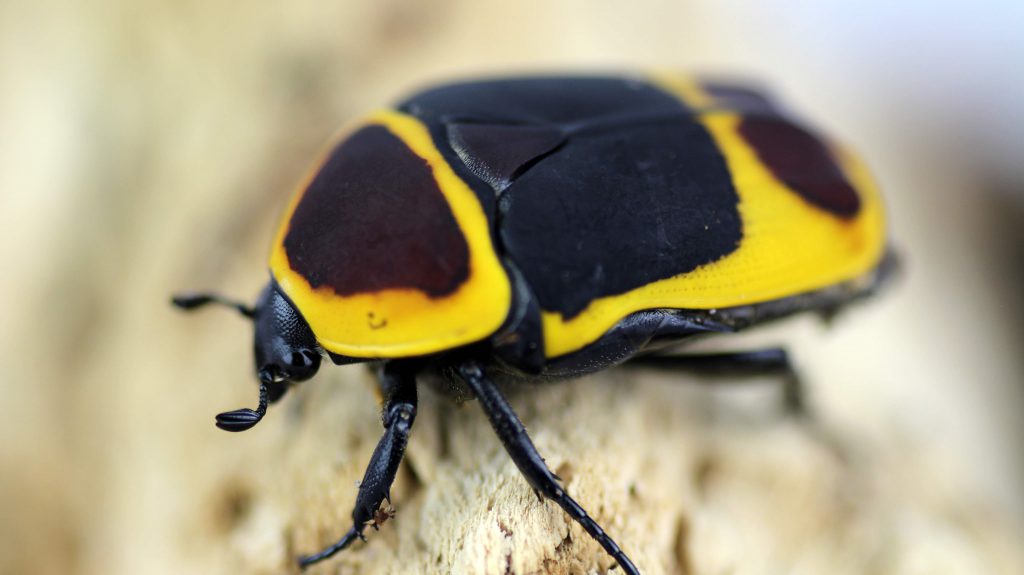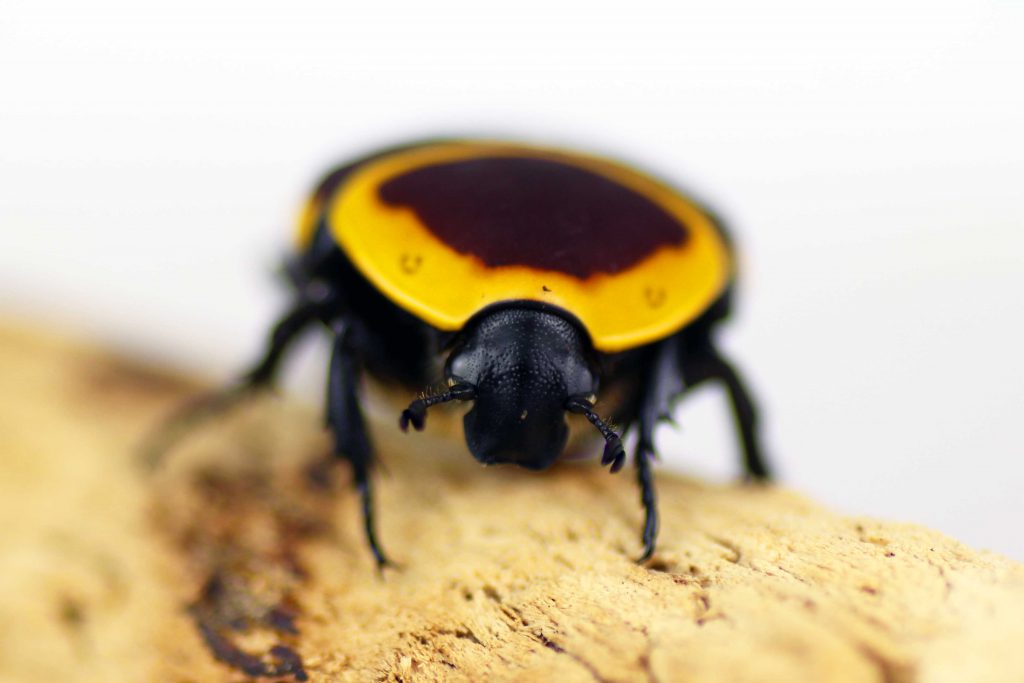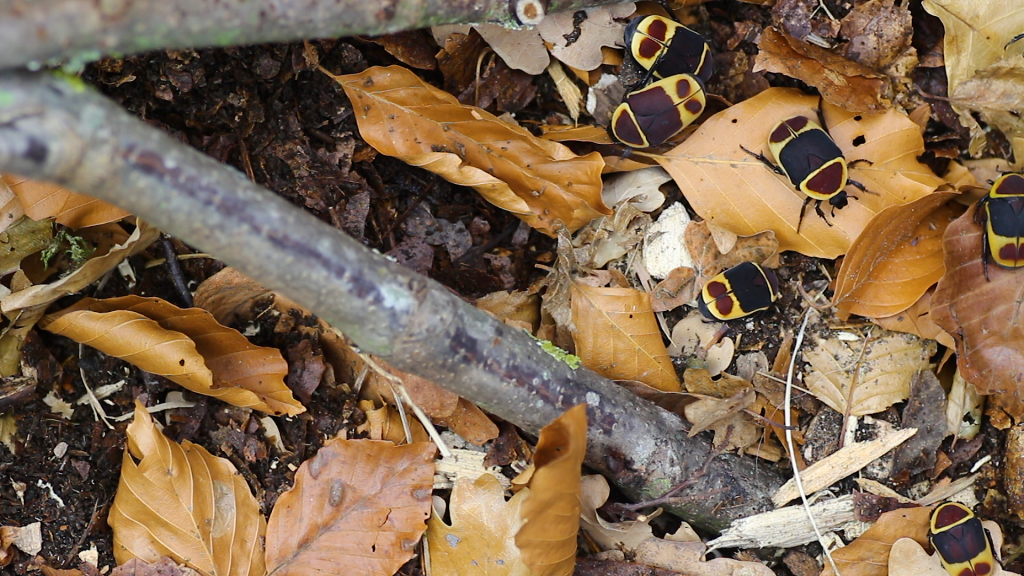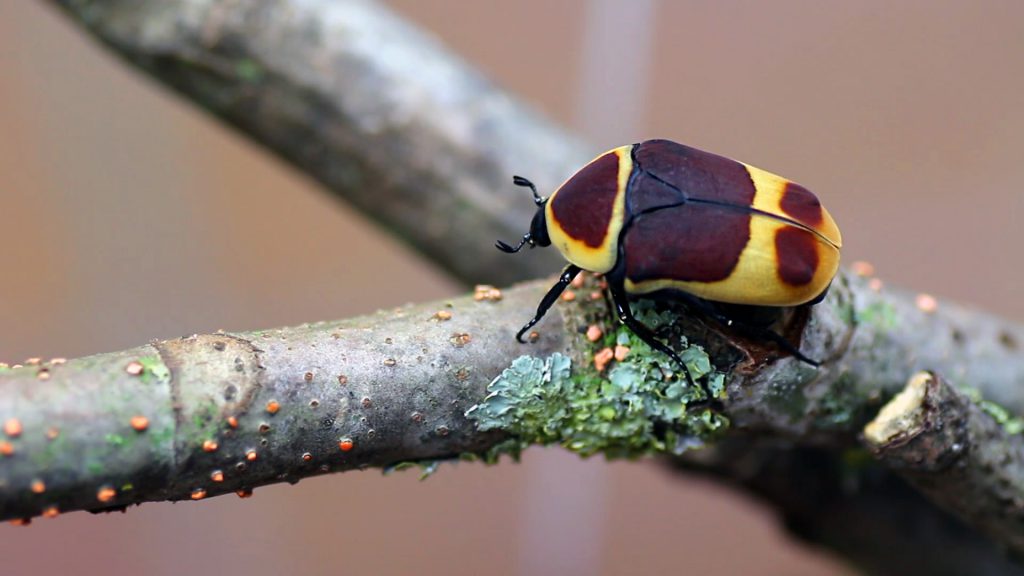Pachnoda marginata peregrina “Congo Rose Chafer”

Origin:
- Congo, Guinea, Senegal, Angola, Cameroon, Kenya, Sudan, Cameroon

Temperature:
- 22-28 °C

Size:
- 2,0 up to 2,5 cm
The Congo rose chafer is a diurnal and extremely agile rose chafer, which is perfect for every beginner. In Africa they live mainly on trees and shrubs and eat fruits, petals and tree sap. Therefore, they also have the urge to climb up and explore all the climbing possibilities offered to them. Their flying skills are a very special spectacle and make the observer smile. The Congo rose beetle turns several times around its own axis, drums with its front legs and hums with a loud roar on the ground.
Arrived on the ground, they search the surface for all sorts of usable food. Therefore there is always something for the keeper to observe and one discovers new behaviour patterns again and again. The outer appearance has no metallic effects as with other rose beetles, but it is pretty and conspicuous. The belly side, the head and the legs are black-brown. The entire upper side is matt velvety and stands out with its yellow signal colour.
Tank:
A plastic box or an aquarium are best suited as accommodation. Since the larvae are located in the substrate and the substrate height should be 10-20 cm, there are hardly any terrariums where such a substrate height can be achieved without the ventilation grille or the front panes being in the way.
The container should have a minimum size of 39 x 28 x 28 cm. A ventilation area on the lid is completely sufficient. A heat source with a 20W spotlight, which is mounted outside the breeding box, is very popular.
As with all beetle species, the most important building block for successful keeping and breeding is the substrate. You can’t use coconut fibre humus, as you can unfortunutaley read a lot. It does not provide any nutritional value for the larvae and disturbs their digestive tract. We use forest humus and white rotten wood in a mixing ratio of 1:1. The surface is covered with leaves. On the one hand, the foliage layer prevents the soil substrate from drying out quickly and on the other hand, foliage is part of the natural food for larvae and beetles.
Of course there should be enough branches for climbing in every Congo rose chafer container. You should not simply place the branches on the ground. It can often happen that the larvae undermine the position of the branches and then overturn them. Therefore, before putting the substrate into the container, place them on the ground and then put the mixture into the box.
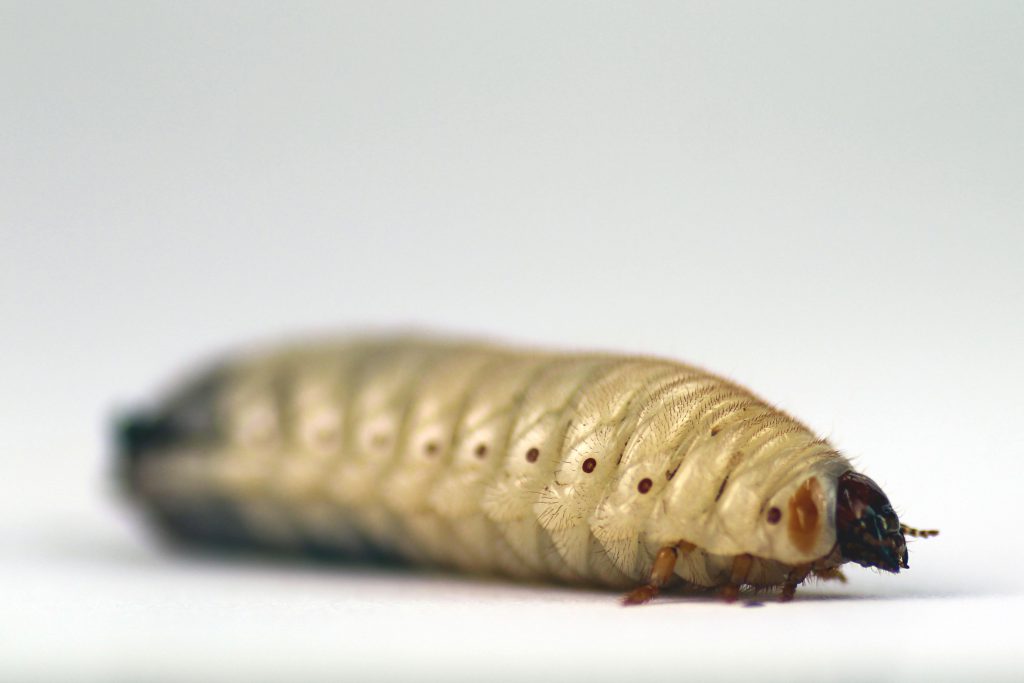
Breeding:
Pachnoda marginata peregrina “Congo rose chafer” is the most common species of rose chafer. It owes this above all to its rapid reproduction rate. The larvae grow up to 5 cm long and 1 cm thick and are excellent as feeding animals for reptiles. They provide a high protein content and are particularly suitable for females after egg deposition or reptiles awakening from hibernation. But they are also popular as fishing baits. In the fishing scene they are known as Congo larvae.
But how does the breeding of the Congo rose chafer succeed?
First you should make sure that you have both sexes of the rose beetles in the breeding container. The sex difference can easily be seen on the underside of the beetle’s abdomen. The male has a clearly visible longitudinal furrow, which the female lacks. This can be clearly seen on the photo. On the left is the female, on the right the male.
Mating takes place all year round. Therefore you permanently have offsprings in different stages in the breeding container.
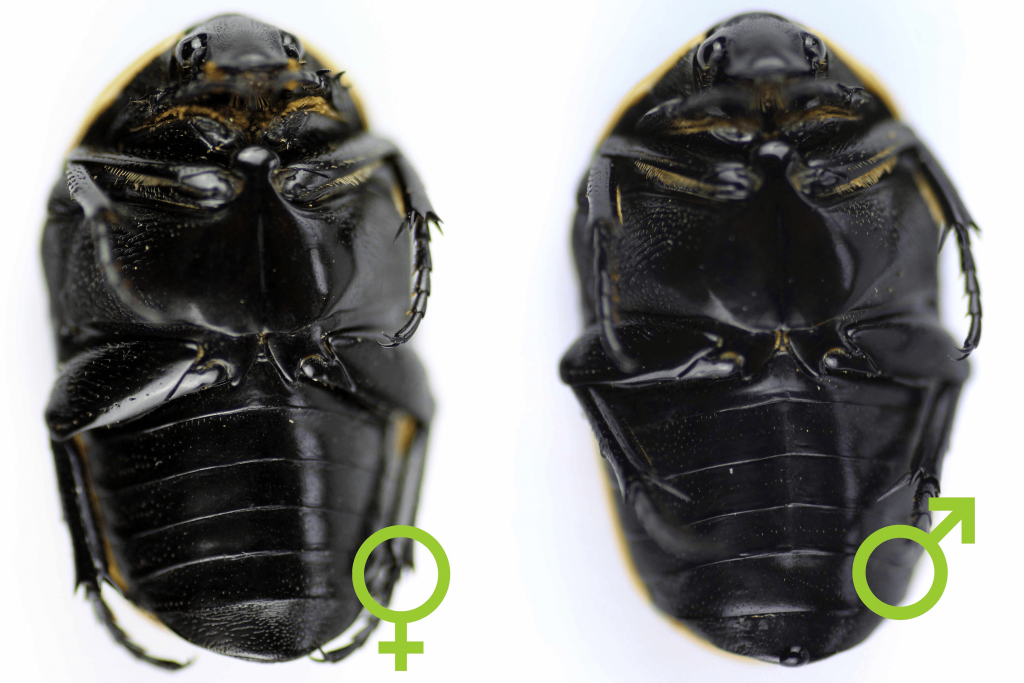
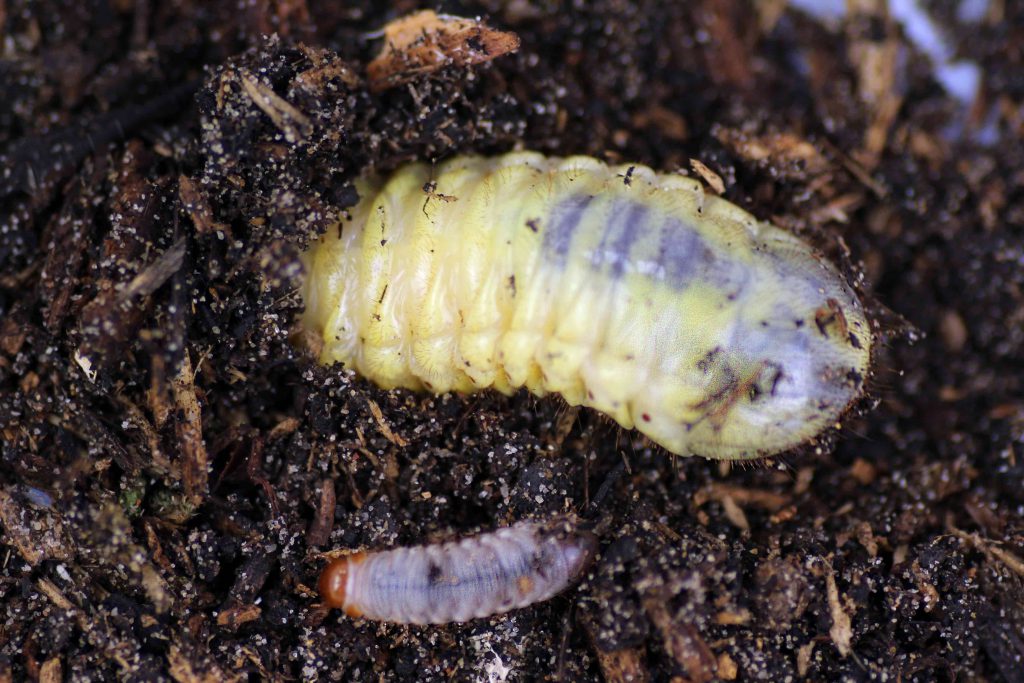
After mating, the female lays an egg pack with up to 180 eggs in the soil substrate. After 3 to 4 weeks the approx. 3mm long larvae hatch and go through two moults in the soil substrate. There they eat the previously mixed in white rotten wood and grow considerably. The development time is very fast for a beetle. At an optimal temperature and a balanced supply of food, the development from egg to beetle takes only 5 months.
After approx. 3 months the L3 larva pupates itself in a self-made cocoon from the soil substrate and its body secretion. The rose chafer hatches after another five to eight weeks and leaves the cocoon a few days later, as soon as the chitin shell is completely hardened, and digs itself out of the ground surface.
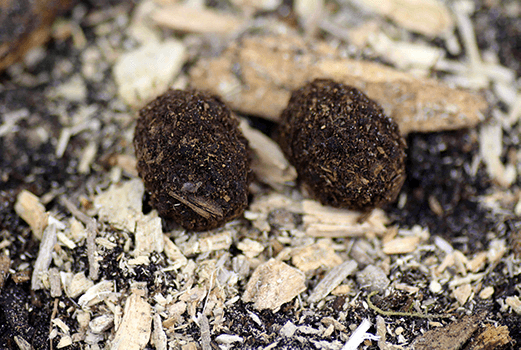
Care and Food:
The substrate should always have a certain basic humidity and must never dry out. Once a week the substrate is briefly showered over with a watering can. In my opinion it is not enough to moisten the surface with a spray bottle. This does not reach the entire substrate and there is a danger that it will become too dry. It takes a little practice and you should slowly and carefully feel your way up. Better a little too little water and pour a little more after than if you put the container under water.
The larvae are already sufficiently supplied with food by the prepared substrate. They also like to nibble on the foliage and the presented fruits for the beetles from below. You can offer the beetles everything except citrus fruits. It is best to choose the overripe fruits from the fruit and vegetable trader. These have a high sugar content and are very popular. From our experience they like to eat bananas, mangoes, strawberries and pears.
But they also like to eat vegetables, salads and blossoms and take them as a welcome change. When buying products, you should make sure that they are untreated organic products and that no pesticides get into the breeding container.
The beetles are also very happy to accept Beetle Jelly. These have the advantage not to mold so fast and can be stored on stock. Especially during the holiday season it makes sense to supply the beetles with several Beetle Jelly during their absence.

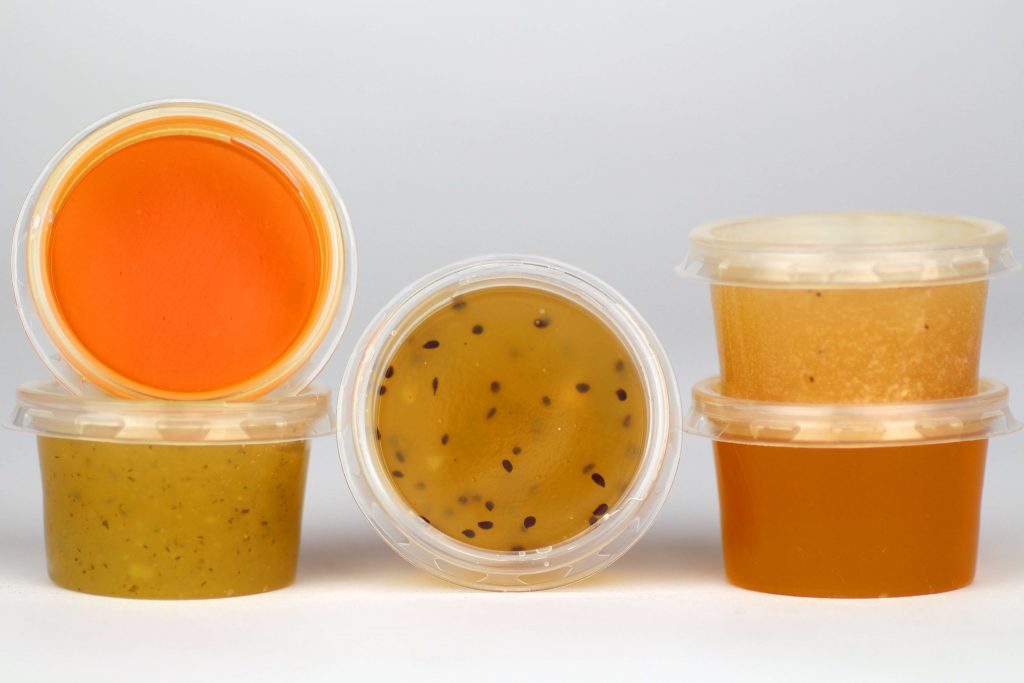

Tip:
One can begin a breeding with 1-2 breeding pairs already.




